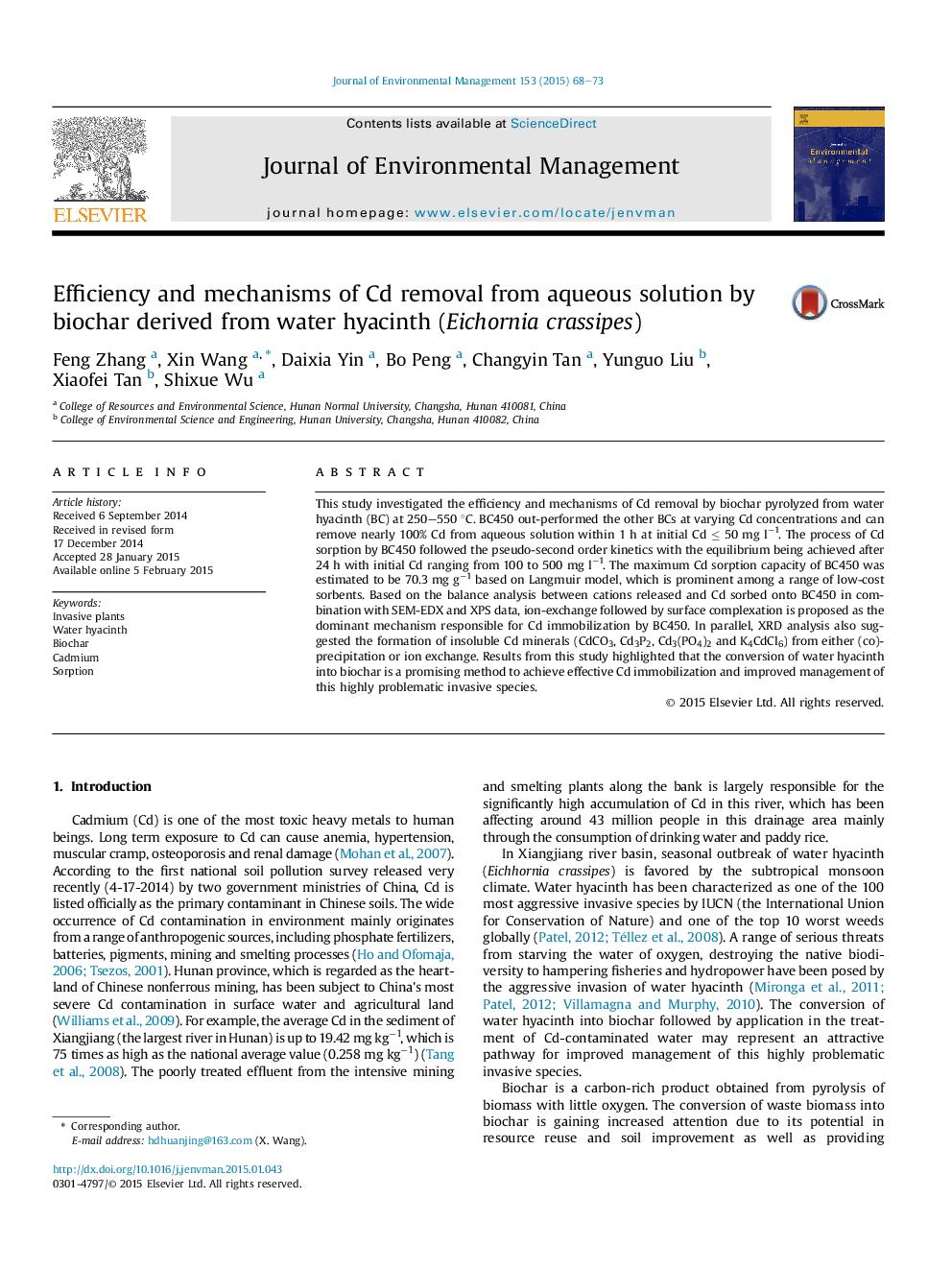| Article ID | Journal | Published Year | Pages | File Type |
|---|---|---|---|---|
| 1055627 | Journal of Environmental Management | 2015 | 6 Pages |
•Water hyacinth biochar (BC) is characterized for its potential use in Cd removal.•BC pyrolyzed at 450 °C was most effective towards Cd sorption.•The maximum capacity of Cd sorption by BC450 is estimated to be 70.3 mg g−1.•Ion-exchange followed by surface complexation predominates in Cd sorption by BC.•Cd precipitation as CdCO3, Cd3P2, Cd3(PO4)2 and K4CdCl6 was evidenced by XRD.
This study investigated the efficiency and mechanisms of Cd removal by biochar pyrolyzed from water hyacinth (BC) at 250–550 °C. BC450 out-performed the other BCs at varying Cd concentrations and can remove nearly 100% Cd from aqueous solution within 1 h at initial Cd ≤ 50 mg l−1. The process of Cd sorption by BC450 followed the pseudo-second order kinetics with the equilibrium being achieved after 24 h with initial Cd ranging from 100 to 500 mg l−1. The maximum Cd sorption capacity of BC450 was estimated to be 70.3 mg g−1 based on Langmuir model, which is prominent among a range of low-cost sorbents. Based on the balance analysis between cations released and Cd sorbed onto BC450 in combination with SEM-EDX and XPS data, ion-exchange followed by surface complexation is proposed as the dominant mechanism responsible for Cd immobilization by BC450. In parallel, XRD analysis also suggested the formation of insoluble Cd minerals (CdCO3, Cd3P2, Cd3(PO4)2 and K4CdCl6) from either (co)-precipitation or ion exchange. Results from this study highlighted that the conversion of water hyacinth into biochar is a promising method to achieve effective Cd immobilization and improved management of this highly problematic invasive species.
Graphical abstractFigure optionsDownload full-size imageDownload as PowerPoint slide
